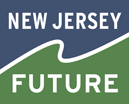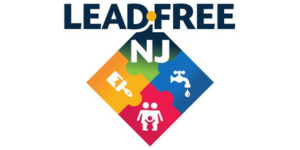“It doesn’t matter if we make every vehicle electric, and it doesn’t matter if we turn of all power plants; climate change will still get worse,” exclaimed Shawn LaTourette, the Commissioner of the New Jersey Department of Environmental Protection (NJDEP), during the 2023 Planning and Redevelopment Conference plenary, The State of Planning and Redevelopment in New Jersey, co-sponsored by New Jersey Future and the NJ Chapter of the American Planning Association.
Transportation
Planning for Tomorrow, Not Today
Tuesday, July 18th, 2023Rolling Along: Why New Jersey Should Join Other States and Offer an E-Bike Incentive Program
Wednesday, May 17th, 2023Electric bicycles, along with programs intended to incentivize their adoption, are rolling out across the country and New Jersey can’t afford to be left behind in this transportation revolution. Transportation emissions, which account for more than a third of all total greenhouse gas emissions in the state, are a critical target for climate change mitigation, necessitating the use of every tool to help us drive less.
Opinion: Car-Free Inspiration From an Overseas Adventure
Monday, May 1st, 2023For four months last fall, my lifestyle changed dramatically when my husband and I lived car-free. As life-long suburbanites, we have always driven a lot to get around. I was the mom-in-the-minivan, and am now the professional-in-a-Prius. But when we took an overdue sabbatical, we lived near universities in three developed countries — England, Germany, and Japan — where everything we needed was within easy reach by foot, bike, bus, or train.
Transportation for Everyone: Designing Safe, Sustainable Options for Women
Friday, March 17th, 2023Last year, New Jersey Future explored how women and gender nonconforming people face disproportionate obstacles when accessing public transit, biking, or walking as forms of transportation. We found that 65% of women-identifying people have experienced street harassment in their lives and that 99% of the NYC public transit riders who reported sexual harassment on the subway identified as female.
Metuchen’s Downtown Revitalization: An Award-Winning Catalyst for Smart Growth
Thursday, March 16th, 2023“The Woodmont Metro at Metuchen Station was a catalyst for further redevelopment in downtown Metuchen… Having residents living downtown has resulted in a remarkable growth of restaurants, making downtown Metuchen a highly popular regional dining destination. New retail and service businesses have also opened creating a vibrant, active downtown,” explains Jay Muldoon, Director of Special Projects with the Borough of Metuchen.
Helping NJ Drive Less: The Need to Dedicate Funding to Transit and Safe Streets
Tuesday, January 31st, 2023Electric vehicles are great, but they won’t reduce greenhouse gas (GHG) emissions in the transportation sector fast enough, nor will they do anything to alleviate congestion. This past October, the United Nations published the Emissions Gap Report 2022, declaring that an important action for the transportation sector is to “integrate land use and transportation planning to prioritize public transit over private automobiles.”
Transit-Oriented Development is Pedestrian-Oriented Development
Monday, January 30th, 2023Despite being the most densely populated state in the country with over 150 train station towns, New Jersey is not a safe place for pedestrians of any age. In our effort to reduce car dependency, increase pedestrian safety, and encourage placemaking that serves the public, NJ ended 2022 with several announcements designating funds for advancing pedestrian and bicycle safety and transit-oriented development (TOD), indicating that the administration recognizes the importance of creating and fostering transportation options besides driving.
Amidst rising pedestrian and traffic fatalities, New Jersey seeks to advance safe street design
Tuesday, July 19th, 2022Street fatalities are on the rise nationally, and right here in New Jersey. The National Highway and Traffic Safety Administration (NHTSA) reports that 2021 marked a 16 year high in roadway fatalities. In New Jersey, our streets and roads claimed 699 lives in 2021, with 220 pedestrian fatalities accounting for approximately 30% of those fatalities.
Opportunity to Participate in a Pilot Program to Track Vehicle Miles Traveled in New Jersey
Tuesday, July 19th, 2022Did you know that a fuel tax you pay at the pump is largely responsible for funding a well-functioning transportation system that gets you to where you need to go, delivers packages to your door, and keeps groceries on the shelves?
Beyond Getting from A to B: Ensuring Safer and Fairer Ways to Move Around
Friday, July 8th, 2022Transportation emissions comprise over 40% of New Jersey’s total greenhouse gases (GHG). Expanding bus and rail transportation options beyond cars not only addresses reduction of GHGs, it also increases affordability and improves general public health by getting transit users to walk or bike to popular modes of mass transit.











